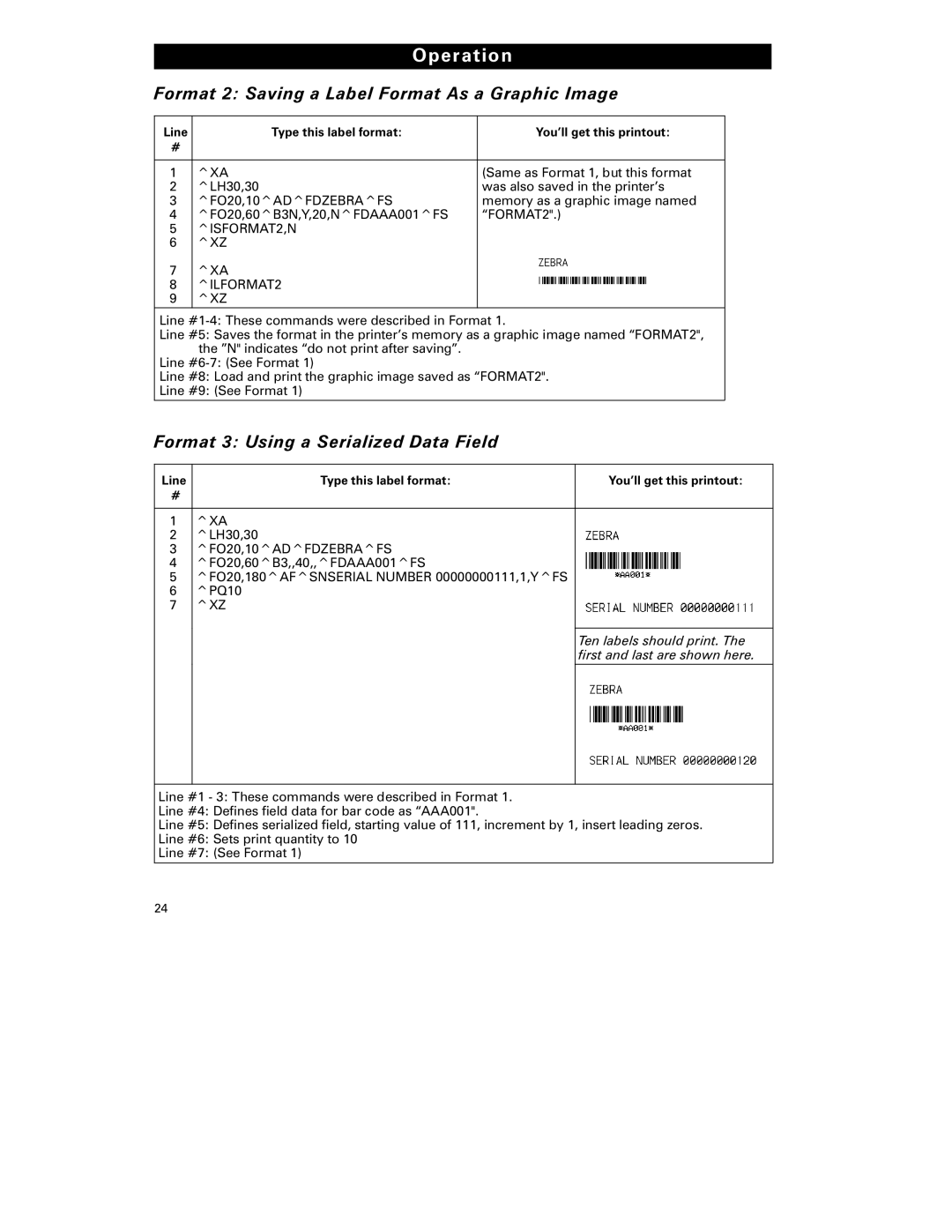
| Operation |
| ||||
Format 2: Saving a Label Format As a Graphic Image | ||||||
|
|
|
|
|
|
|
Line | Type this label format: |
| You’ll get this printout: |
|
| |
# |
|
|
|
|
|
|
|
|
|
|
|
|
|
1 | ^XA |
| (Same as Format 1, but this format |
|
| |
2 | ^LH30,30 |
| was also saved in the printer’s |
|
| |
3 | ^FO20,10^AD^FDZEBRA^FS |
| memory as a graphic image named |
|
| |
4 | ^FO20,60^B3N,Y,20,N^FDAAA001^FS |
| “FORMAT2".) |
|
| |
5 | ^ISFORMAT2,N |
|
|
|
|
|
6 | ^XZ |
|
|
|
|
|
7 | ^XA |
|
|
|
|
|
8 | ^ILFORMAT2 |
|
|
|
|
|
9 | ^XZ |
|
|
|
|
|
Line |
|
| ||||
Line #5: Saves the format in the printer’s memory as a graphic image named “FORMAT2", |
|
| ||||
| the ”N" indicates “do not print after saving”. |
|
|
|
| |
Line |
|
|
|
| ||
Line #8: Load and print the graphic image saved as “FORMAT2". |
|
| ||||
Line #9: (See Format 1) |
|
|
|
| ||
Format 3: Using a Serialized Data Field | ||||||
|
|
|
|
| ||
Line | Type this label format: |
| You’ll get this printout: | |||
# |
|
|
|
|
|
|
|
|
|
|
|
| |
1 | ^XA |
|
|
|
| |
2 | ^LH30,30 |
|
|
|
| |
3 | ^FO20,10^AD^FDZEBRA^FS |
|
|
|
| |
4 | ^FO20,60^B3,,40,,^FDAAA001^FS |
|
|
|
| |
5 | ^FO20,180^AF^SNSERIAL NUMBER 00000000111,1,Y^FS |
|
| |||
6 | ^PQ10 |
|
|
|
| |
7 | ^XZ |
|
|
|
| |
|
|
|
|
|
| |
|
|
|
| Ten labels should print. The | ||
|
|
|
| first and last are shown here. | ||
|
|
|
| |||
Line #1 - 3: These commands were described in Format 1. | ||||||
Line #4: Defines field data for bar code as “AAA001". |
|
|
|
| ||
Line #5: Defines serialized field, starting value of 111, increment by 1, insert leading zeros. | ||||||
Line #6: Sets print quantity to 10 |
|
|
|
| ||
Line #7: (See Format 1) |
|
|
|
| ||
24
